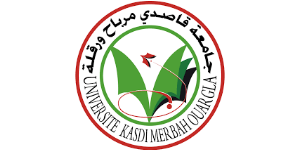Introduction De L’olivier (olea Europaea L.) À Oued Souf : Situation Actuelle Et Perspectives De Développement, Cas De L'exploitation Daouia
Résumé: The study was carried out in southeastern Algeria on the productivity and characterization of olive growing in Oued Souf, from 2010 to 2014, concerned nine olive tree cultivars (Olea europaea L.). They had different planting ages and were conducted under localized irrigation in the farm of Daouia. The objective was to assess yield performance, pomological characteristics of fruits and phytochemical potentialities of cultivar’s leaves. The results showed an alternation of production, and the olive yield varied according to the varieties and increased substantially with the trees development stage. In full production, cumulative yields over a five-year period, for the Gordal (Sevillano) and Chemlal varieties oscillate respectively between 190.6 and 306.6 kg/tree. At the stage of entry in production, Manzanilla and Aharoun varieties presented respectively cumulative yields of 195.4 and 211.4 kg/tree. Juvenile plants of Ferkani variety showed a cumulative yield of 134 kg/tree. Rougette had a remarkable alternation index (0.18), exceeding the other varieties (≤ 0.07). The pomological characters of fruits were variables, inevitably influenced by the genetic potential of varieties. Fruit weight increased in Gordal (9.07 g) and reached its minimum with Chemlal (1.76 g). The Sigoise showed the highest fruit pulp fraction (88.14%) and Chemlal the lowest one (70.44 %). Under these Saharan conditions, the olive oil content in fruit pulps was generally low in the studied varieties. It reached its maximum at Ferkani (40.25 % DM) and its minimum in the table olive variety Gordal (9.85 % DM). The latter showed the highest phenolic rate in the dry fruit pulp (28.46 mg EAG/g DM). While Aharoun shows the lowest one (4.11 mg EAG/g DM). Leaf extracts contained higher levels of bioactive substances, with total phenols oscillating between 409.86 and 298.76 mg EAG/g DM for Manzanilla and Gordal varieties respectively. The total flavonoid contents were 49.65 and 36.01 mg EQ/g DM respectively for the Rougette and Ferkani varieties. The foliar extracts also had a strong kinetics of trapping of the DPPH radical, where the IC50 values obtained were very low and vary between 0.0265 and 0.0486 mg/ml respectively for Manzanilla and Sigoise varieties. Based on these results, we recommend cultivating the varieties: Sigoise, Rougette, Gordal (Sevillano) and Manzanilla exclusively for table olives production in the Oued Souf region. The level of performance of the Ferkani variety indicated a convenience to the olive oil production. All this remains conditioned by the economic feasibility in this desert zone. The olive leaves could be developed because of their natural richness in powerful antioxidant substances.
Mots-clès:
Nos services universitaires et académiques
Thèses-Algérie vous propose ses divers services d’édition: mise en page, révision, correction, traduction, analyse du plagiat, ainsi que la réalisation des supports graphiques et de présentation (Slideshows).
Obtenez dès à présent et en toute facilité votre devis gratuit et une estimation de la durée de réalisation et bénéficiez d'une qualité de travail irréprochable et d'un temps de livraison imbattable!


